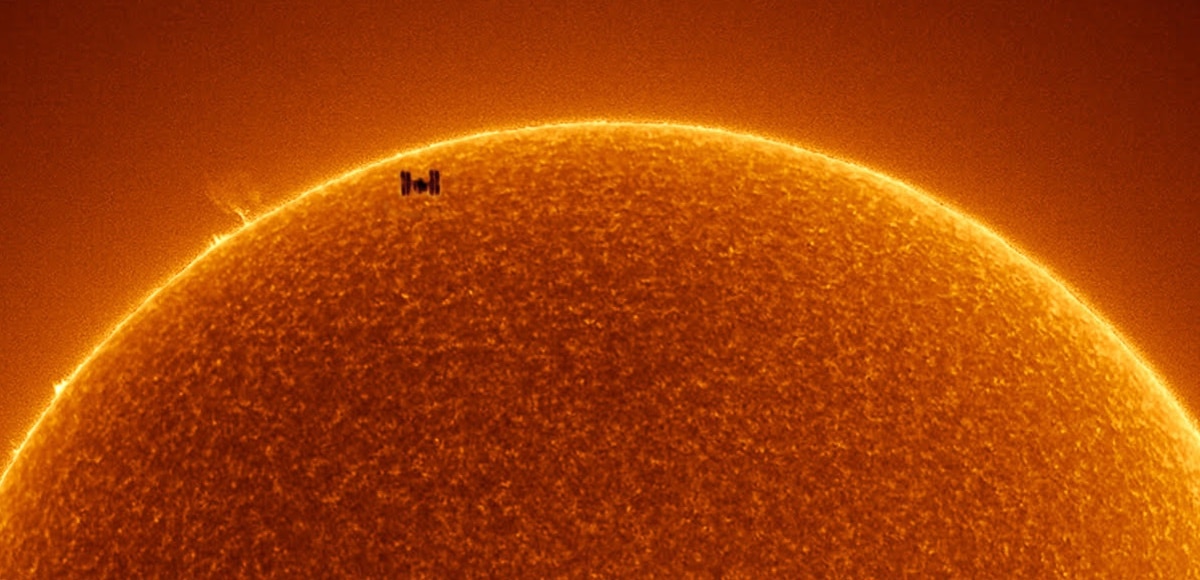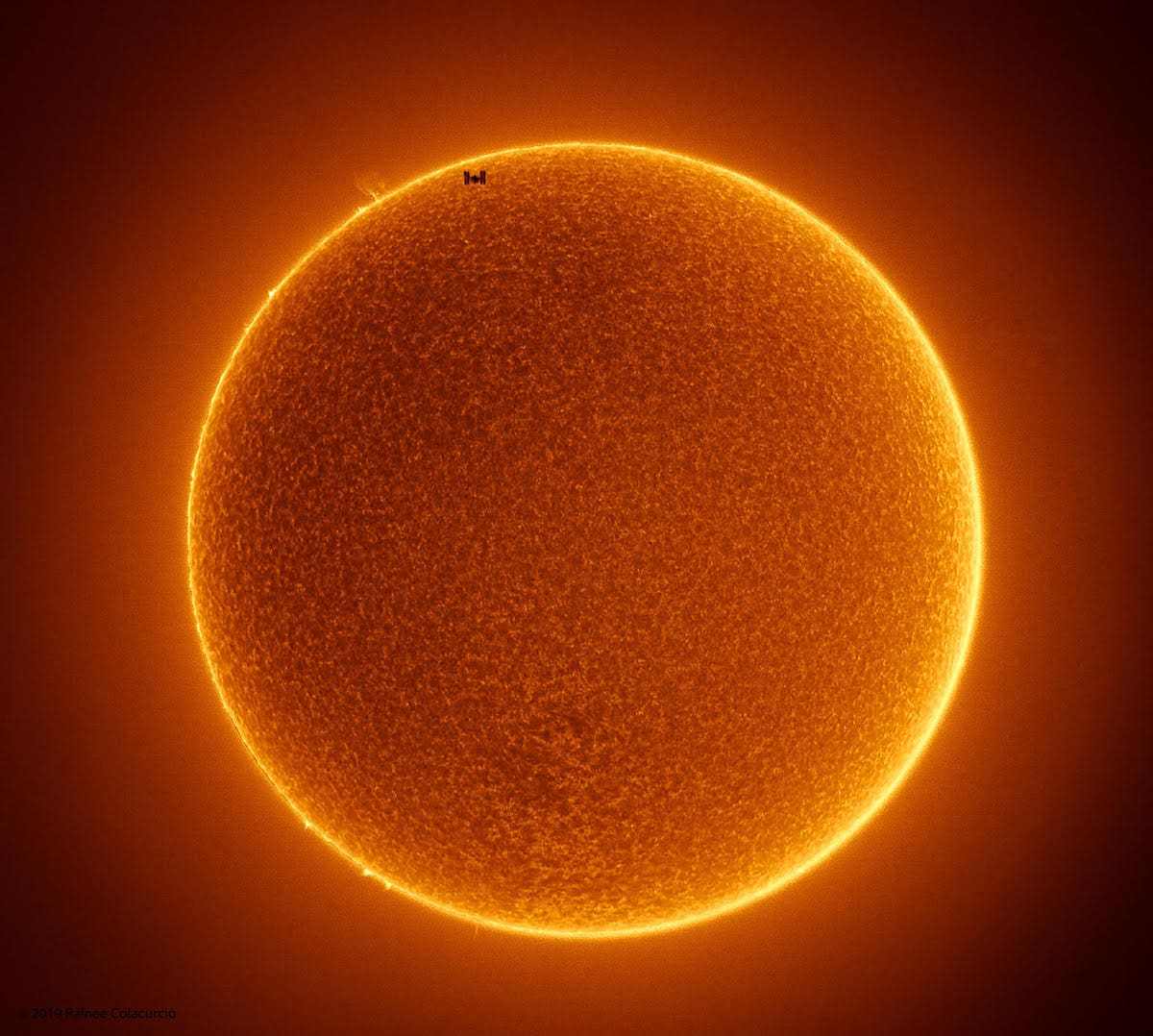
A photo of the sun with a glimpse of the International Space Station as it orbits the Earth was recently featured by NASA and it would be stunning enough on its own; however, the image is made all the more special because it features the Sun at a time when there are no sunspots. Thanks to Rainee Colacurcio, who captured the photo, the world is able to enjoy this unique moment.
Colacurcio has also posted several other photographs of ISS transiting the Sun, demonstrating her skill level in taking such a technically difficult photograph. “Transiting the Sun is not very unusual for the ISS, which orbits the Earth about every 90 minutes, but getting one's timing and equipment just right for a great image is rare,” wrote NASA, who featured the photograph as its Astronomy Picture of the Day.
In order to get the final appearance, two photographs were composited together. The first featured the space station as it transited the Sun, while the other was taken in order to capture the details of the Sun's surface. It's in these details that we can see the lack of sunspots. This isn't entirely unusual because we're currently in a period of low solar activity known as the Solar Minima.
This cycle can last for at least 11 years and, during this time, the Sun can go days without solar flare or sunspots. Still, NASA notes that sunspot activity is currently quite low, even for a Solar Minima. What is a sunspot exactly? These temporary spots appear on the Sun's outer shell thanks to reduced temperatures caused by magnetic fields. Looking like black patches on the Sun, they can be as large as planets and last for months. Though scientists don't know exactly why we're experiencing a reduced number of sunspots currently, it certainly makes for a beautiful photograph.
This incredible photo of the ISS transiting the Sun is made all the better by the lack of sunspots on the enormous star.























































































